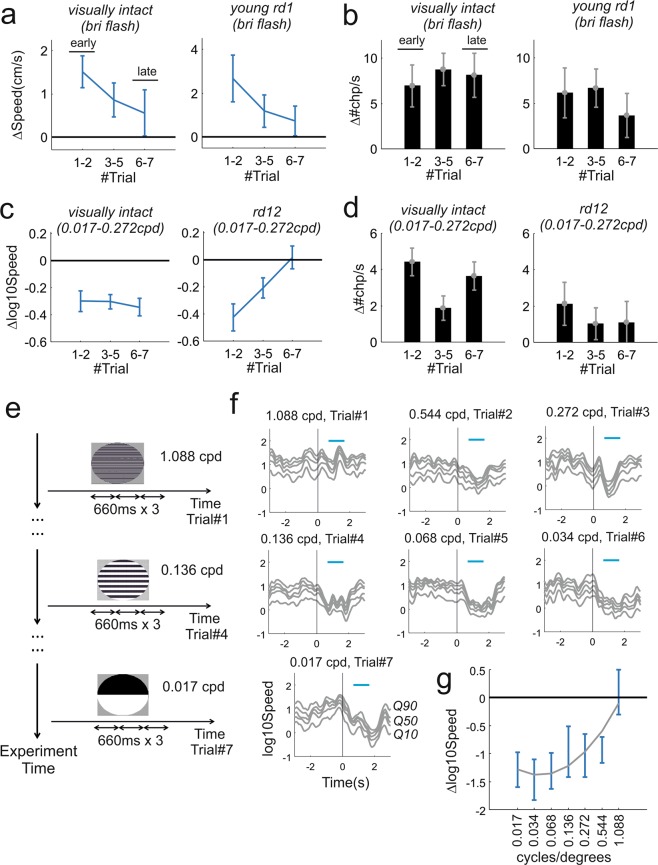Figure 5.
Behavioural habituation to repeated stimulation in visually intact and retinally degenerate mice. (a) Average changes in speed after stimulus onset as function of trial order for the highest intensity flash (data shown as mean ± sem). Represented in left and right panels are visually intact and “young” rd1 animals. Both groups exhibit a negative trend (visually intact: p = 0.049, n = 36 trials; young rd1: p = 0.039; n = 24 trials; comparisons between early and late trials, permutation test). (b) Difference between changepoint rate after and before stimulus onset (Δ#chp/s) as function of trial order during highest intensity flash for visually intact and young rd1 animals (respectively left and right panel). Neither group showed a significant trend (visually intact: p = 0.718, n = 36 trials; young rd1: p = 0.283; n = 24 trials; comparisons between early and late trials, ranksum test). (c,d) Like panels a and b but for looming responses in visually intact and rd12 animals. No significant trend was observed for visually intact animals (panel c: p = 0.482, n = 39 trials; panel d: p = 0.556, n = 39 trials). The rd12 groups exhibited gradual reduction in speed (p = 0.001, n = 21 trials) while no clear trend could be observed in changepoints (p = 0.401, n = 21 trials). (e) Alternative protocol based on systematic reduction of spatial frequency from highest to lowest (1.088, 0.544, 0.272, 0.136, 0.068, 0.034, 0.017 cycles/degree). Each spatial frequency was presented only on one trial and repeated three times (each repetition lasting 660 ms as previous tests reported in Fig. 1d; double arrows represent this time interval) during that trial as in19. (f) Average speed response for all spatial frequencies tested (n = 5 animals, 1 trial/animal). (g) Polynomial fit for changes in speed as function of spatial frequency (polynomial degree = 2; R2 = 0.263; same dataset shown in from panel f, data shown as mean ± sem). Consistent with results obtained by using the block randomised protocol (Fig. 3a–c) reduction in speed can be observed up to 0.544 cycles/degrees but not at 1.088 cycles/degrees.

